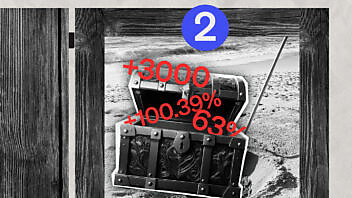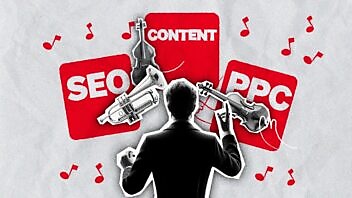This is one of a series of blogs about the changing B2B Go-To-Market landscape. You can check out the others in the series at the bottom of this piece.
We’ve been championing the (re)emergence of community-building as a sustainable B2B brand strategy.
In fact 33% of people picked it as their primary focus for change in a recent Velocity survey. The biggest single choice by far.
So we looked to see if our survey data can throw up tips for marketers heading that direction. Can it help us decide where to build a community today?
B2B community-building in 2025
It’s worth saying we’ve been actively building the Velocity community for decades. Until recently our advice would be unequivocal: build your own database of engaged followers around your site.
But now we’re not so sure.
We have about 4,200 lovingly maintained B2B marketers (along with the always-loyal Kessler family) opted into our newsletter. And, together, we set the rules of our relationship. Bliss.
But it’s about 50% down from peak thanks to an insidious “anti-growth coalition” featuring data compliance, zero-click searches and link-loathing social media platforms.
At the same time our Linkedin followers have been steadily growing at 15% YoY.
The trends suggest we should be looking harder at LinkedIn. But it’s not just a numbers game. Do relationships, more easily kindled on social platforms, burn with the same intensity? We decided to take a look.
Platform wars: Team Database vs. Team LinkedIn
We expected our database — people who signed up on our site — to be more in tune with our brand values than people who follow us on LinkedIn. Why? Because the sign-up process is a more deliberate “hand-up” moment.
- It’s on our branded pages (rather than somebody else’s)
- It involves more friction (form fields rather than just pressing a button)
- It contains a commitment for direct comms (rather than as part of a daily scroll)
But when we segmented the answers to our recent survey by database vs. LinkedIn respondents, we were surprised. Here’s why.
Survey question 1: Are you familiar with Velocity Partners?
We thought Team Database would be far more familiar than Team LinkedIn here — if only because LinkedIn sign-ups feel quick and impulsive.
But things are pretty much even: in both channels, we scored just over 90% familiarity. So no easy, quick win for Team Database here.
Survey question 4: Has Velocity Partners influenced your position on what needs to change in your Go-To-Market strategy?
Again, we would have assumed that Team Database would win this one.
We ran a significant campaign about the declining effectiveness of traditional B2B marketing strategies last year. And while LinkedIn featured prominently as a promotional channel, most of our efforts were to drive people to experiences on our site.
But Team LinkedIn wins here: 54% of LinkedIn folks agreed we have influenced their position, versus 47% of database sign-ups.
Survey question 3: What do you think is the single biggest change you could make to improve your Go-To-Market strategy?
The options to this question were:
- Alignment of Sales and Marketing teams
- Connecting brand and performance
- Focus on audience and community building
- Integrating cross-channel marketing
- Prioritizing long over short-term marketing strategy
The most prominent themes we explored throughout our campaign were “Connecting brand and performance” and “Focus on audience and community building.”
And of people who said we’d influenced their thinking, we expected more folks from Team Database to select those two themes than Team LinkedIn.
Again, we were wrong: our LinkedIn audience seems more in tune with our campaign messages:
Connecting brand and performance
Team LinkedIn: 30%
Team Database: 23%
Focus on audience and community building
Team LinkedIn: 39%
Team Database: 32%
Survey question 2: How much do you agree or disagree with the following statement: Traditional B2B marketing strategies are becoming less effective.
We had a feeling Team LinkedIn might win this one. The platform attracts users with an endless scroll of perpetual novelty. The algorithm rewards freshness — new thinking, ideas and approaches. By definition, LinkedIn users tend to be open to the idea of change.
So, somewhat unsurprisingly 69% of LinkedIn users agreed that current B2B marketing strategies are becoming less effective, versus 62% of Team Database.
So: is it time to put more chips into LinkedIn?
So, does all this mean you’re better off focusing your community-building efforts around LinkedIn, rather than your owned properties?
It’s not that black and white.
The results are close, but Team LinkedIn generally outperforms Team Database — enough to challenge our assumption that the more proactive opt-in of a database sign-up translates to greater resonance with our output.
But it’s way harder to compete for mindshare on LinkedIn. It’s a loud, constant cacophony that overwhelms users with an abundance of choice and puts brands on a content treadmill that conflates engagement with resonance.
When we split the data by what is arguably the key issue of our campaign — whether B2B marketing strategies are becoming less effective — more people from Team Database say Velocity has influenced them than Team Linkedin (62% vs. 44%).
Put another way, people who came to us via Linkedin and agree that marketing needs to change are less likely to associate us with that topic. And that’s because it’s highly contested on the platform — we have less ownership over the key issue we want to market around.
If our ultimate goal is to build a community of folks who A) believe marketing needs to change, and B) think of Velocity when they’re looking to solve that problem, it seems that our own database still edges out LinkedIn.
It’s (still) about resonance
It won’t come as any surprise to you that different platforms serve different purposes.
But these results did change how we think about LinkedIn.
First, our on-platform brand recall is higher than we thought — showing up on someone’s feed might not be as fleeting and transactional as we assumed.
Second, our LinkedIn audience are just as like-minded as our database (if not more so in most cases). They’re receptive to new thinking, open for debate and able to recall the source of ideas.
It’s given us more confidence in the efficacy of community-building on LinkedIn — and revealed that we need to adapt our own (typically slower-burn, blog-based) content strategy to compete in that space.
But it’s not time to abandon our website and database strategy for three significant reasons:
1. Campaign spike
We ran the survey on the back of a campaign over a six-month period. The investment in messaging, creativity and content really paid off. But it’s hard to sustain.
Our database, on the other hand, is a more consistent tool without spikes. We need to balance both: periodic campaigns for a burst of on-platform growth, underpinned by a steady audience opting-in for the long-term.
2. Algorithm volatility
Since we ran the campaign there have been changes (perhaps several) to the algorithm. We can’t afford to put our eggs in one shaky basket.
The temptation to devote all our resources to big-swing LinkedIn campaigns is considerable. But it’s not enough to surrender our own community to a platform we don’t control.
3. Lead conversion
There’s no question that LinkedIn exposed more people to the Velocity brand. But ultimately, it doesn’t matter how people hear of us or how much they agree with us — our site is where we win clients. Almost every inbound lead happens after a rummage through some key web pages (like our content, solutions, services and even people pages).
When it comes to community building, LinkedIn versus an owned database is a false dichotomy. Of course the answer is both. But this exercise confirmed just how different those audiences (and our relationship with them) can be.
We started using LinkedIn as a promotional channel to send people to the Velocity mothership site. But it’s getting progressively more difficult to push people to a second location.
Not only does LinkedIn deprioritise external links, passive scrolling is fundamentally different to active browsing, and we need to stop treating those activities — and by extension, those audiences — as interchangeable.
Like a lot of brands, our community is divided between increasingly ring-fenced platforms like LinkedIn and our owned database. The job isn’t to pick one over the other, or to try and integrate them — it’s to understand how resonance differs between them, and tailor our approach accordingly.
We hope you’ve enjoyed looking into our minds, methods and maths over the past few months. Do check out the other in the series.

Enjoyed this article?
Take part in the discussion





















Comments
Doug Kessler April 23rd, 2025
A hypothesis: maybe the LinkedIn cohort are more actively engaged marketers than the email sign-ups. Maybe people sign up once and then their interest comes and goes, while the LinkedIn folks are super-engaged right now. The kind of marketers who hang out on LinkedIn to discuss marketing… that’s the sweet spot in the cream floating on top of the of the pumpkin spice ICP latte.
Also, the Kessler family cancels itself out because they engage on both channels. Especially Mom.
Divyanshi Agrawal August 13th, 2025
This is a very informative blog! Just like using the right Organic Fertilizer helps crops grow strong and healthy, building your B2B community in the right place ensures growth and engagement. Brands like Radhakrit remind us that quality and care make all the difference, whether in agriculture or business networking.